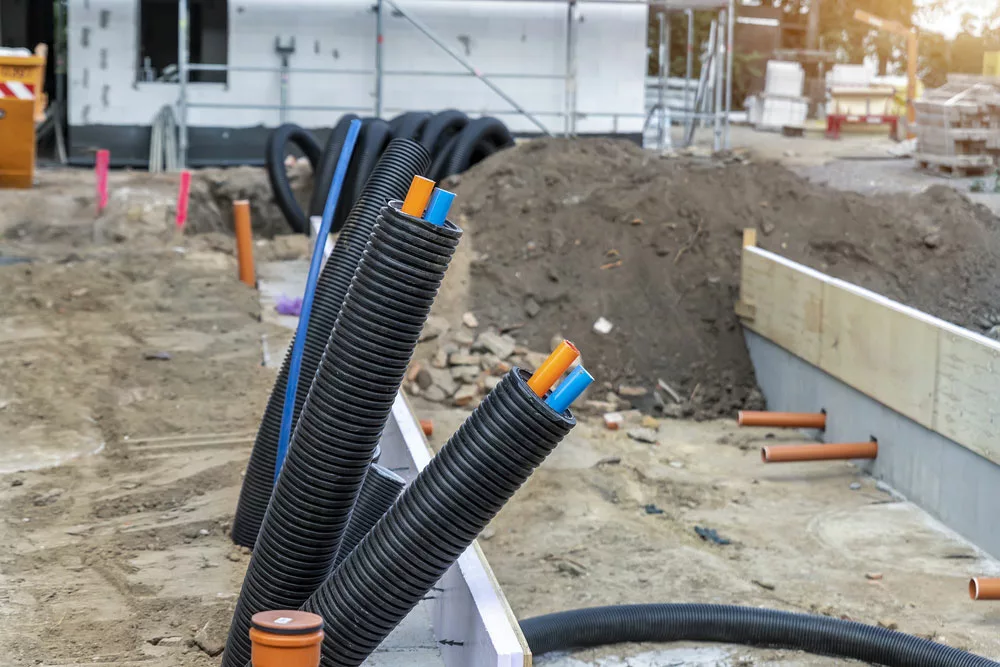Old cloth-covered electrical wires were common in electrical wiring before the 1960s. They dominated many homes then because they were the most affordable options.
However, they might still exist today, especially in homes built in the mid-20th century.
While these wires were once considered state-of-the-art, they have a significant risk due to their outdated insulation. This article will explore why you should replace an old electric wire.
Table of Contents
- Why is Cloth Wiring Dangerous?
- Different Types of Clothes Insulated Wiring
- How to Identify Cloth Wiring
- Essential Steps on Replacing Electrician’s Cloth Wiring
- Benefits of Replacing Cloth Wiring
- Cost to Replace Cloth Wiring
- Old cloth-covered electrical wires: FAQ
- To Wrap it Up
Why is Cloth Wiring Dangerous?
Cloth wiring is dangerous due to the following reasons:
Health hazards: Some old cloth electrical wire used asbestos for insulation because it was affordable and extremely effective. This substance can cause severe health issues such as cancer with long-term exposure.
Heat containment issues: A cloth sheath cannot be as good as modern thermoplastic insulators. They may struggle to contain heat, resulting in the build-up of excessive heat in the wire and surrounding.
Fire risks: Cotton wiring can become brittle over time. This may expose underlying electrical wire, increasing the fire risk in your home.
Grounding problems: Cloth-covered wires, like any other electrical wire, can be dangerous if not correctly grounded.
Vulnerability to damage: Insects and rodents are likely to damage cloth wiring. They can chew the cloth insulation, thereby exposing the wire. This increases the risk of electrical arcing.
Different Types of Clothes Insulated Wiring
There were two types of cloth-insulated wires. Though they were similar at a glance, there were slight differences that you could notice.
Fabric-Sheathed Electrical Wire
This type of wiring consists of a copper or aluminum conductor covered in fabric insulation. The cloth material would be silk, rayon, or cotton, depending on the manufacturing year.
They could treat the fabric with asbestos to make it fire retardant.
Fabric-Sheathed Rubber-Insulated Electrical Wire
This type of wiring is similar to the fabric-sheathed electrical wire but with rubber as an extra coating measure. Rubber insulation provides better insulation resistance and is more durable than fabric insulation.
How to Identify Cloth Wiring
Identifying cloth-insulated wires may be challenging and sometimes require a professional. But if you decide to inspect it on your own, check if it looks rubberized.
Rubberized wires on the outside likely have cloth on the inside.
The early method of electrical wiring in buildings was Knob-and-tube wiring. If you have this type of wiring, your home may have old cloth wiring.
Check for the brand. Some popular old cloth wiring names in the US were Dutrax, Ammcoflex, Cablex, Cirtex, and Essex.
Essential Steps on Replacing Electrician’s Cloth Wiring
You just bought a home and realized the wiring system is old cloth electrical. Considering the dangers we mentioned before, you will need to replace them.
Replacing an old cloth wiring system may be an easy task depending on the project size. However, whatever the size of the project, we recommend hiring a licensed professional in anything concerning electricity.
The electrician usually starts by switching off the power supply and then disconnecting the old wiring system from any device.
The next step is removing the wiring and reinstalling a new one. It sounds easier to do in writing, but this can be a whole day’s work.
Benefits of Replacing Cloth Wiring
Many benefits come with replacing the old cloth-covered electrical wire. Some of them
include the following:
Improved Safety: Cloth wiring is often outdated and can pose a significant risk of electrical fires, short circuits, and electrical shocks.
Replacing it with new, modern wiring can help reduce these risks and improve overall safety in the building.
Increased Efficiency: Modern electrical systems are generally more efficient than older systems, which can help reduce energy costs and save money over time.
Expanded Capacity: Older electrical systems can’t handle the demands of modern technology, such as high-powered appliances and electronics.
Replacing them can help expand the electrical system capacity to accommodate these demands.
Improved Property Value: Upgrading a building’s electrical system can increase its value and make it more attractive to potential buyers or tenants.

Modern plastic insulated electric wire
Cost to Replace Cloth Wiring
The cost to replace cloth wiring can vary depending on several factors, but on average, it can range from $8,000 to $15,000.
However, the price may be higher if the home has an extensive electrical system or if you must make other electrical upgrades simultaneously.
The cost may also increase if the home has difficult-to-reach areas, such as a crawl space.
Old cloth-covered electrical wires: FAQ
Old Cloth-Covered Electrical Wire: When Did They Stop Using Cloth-Covered Wiring?
Cloth-covered electrical wires were common in the 1960s before plastic or nonmetallic insulation became dominant. Though plastic-insulated cables entered the market in the early 1900s, they started dominating homes in the 1970s.
Old Cloth Covered Electrical Wire: Does all Cloth Wire Contain Asbestos?
Cloth wire manufacturers dominantly used asbestos on wires to prevent deadly building fires. Most cloth wiring contains this substance.
Even some cloth sheath rubber insulated contains asbestos. However, we no longer use the substance in modern wiring due to its health risk.
Old Cloth Covered Electrical Wire: How Do I Know If My Cloth Wire Has Asbestos?
With a flashlight, look closely at the end of the cloth wire screwed to the socket. The cloth wire contains asbestos, and you can see fabrics on the outside of the wire and white fabric where the inner wire sticks out from insulation.
To Wrap it Up
Replacing your home’s electrical system can reduce the risk of electrical fires, increase your electrical system efficiency, and improve your home’s overall value. It is essential to exercise caution when carrying out replacement projects.
